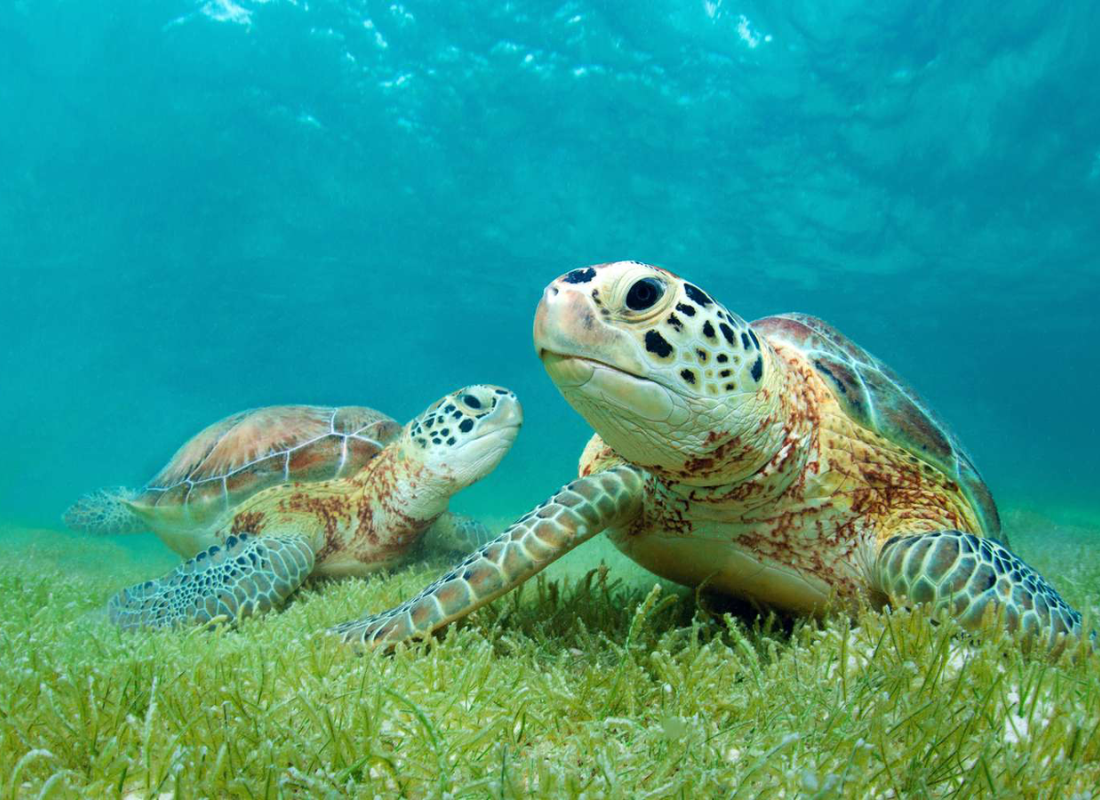
Sea turtles are fascinating creatures with unique anatomical features and adaptations that enable them to thrive in marine environments. Understanding these characteristics helps in appreciating their ecological roles and the challenges they face.
1. Shell Structure

Overview: The most distinctive feature of a sea turtle is its shell, which is divided into two parts: the carapace (upper shell) and the plastron (lower shell). The shell is made up of bone and cartilage and is covered by scutes, which are keratinized plates.
Adaptations:
- Protection: The hard shell provides protection against predators and rough environmental conditions.
- Streamlining: Unlike land turtles, sea turtles have a more streamlined shell shape, reducing drag and enabling efficient swimming.
2. Limbs and Locomotion

Overview: Sea turtles have flippers instead of the legs and feet seen in other turtles. The front flippers are long and powerful, while the back flippers are shorter and used for steering.
Adaptations:
- Swimming: The large, paddle-like front flippers allow sea turtles to propel themselves through the water at impressive speeds, reaching up to 35 km/h (22 mph) in some species.
- Digging: The rear flippers are adapted for digging nests in the sand during the nesting season.
3. Respiratory System

Overview: Sea turtles have lungs and must surface to breathe air. However, they are capable of holding their breath for extended periods, allowing them to remain underwater for hours.
Adaptations:
- Diving: Sea turtles have adaptations such as high levels of myoglobin in their muscles, which allows them to store oxygen and withstand long dives.
- Gas Exchange: Some species can also absorb a small amount of oxygen through their skin and cloaca, aiding in prolonged submersion.
4. Sensory Adaptations

Overview: Sea turtles have developed acute senses to navigate and survive in their aquatic environments.
Adaptations:
- Vision: Their eyes are adapted to see well in the dim light underwater but are nearsighted on land. They can detect bioluminescence, which helps them find prey in the dark depths.
- Smell: Sea turtles have an excellent sense of smell, crucial for locating food and navigating back to their natal beaches for nesting.
- Magnetic Navigation: Sea turtles possess magnetoreception, allowing them to detect the Earth’s magnetic fields and navigate across vast ocean distances with remarkable accuracy.
5. Feeding Adaptations

Overview: Sea turtles have varied diets, and their mouth and jaw structures are adapted to their specific feeding habits.
Adaptations:
- Beak Shape: Different species have differently shaped beaks suited to their diets. For example, the hawksbill turtle has a narrow, pointed beak for extracting sponges and other invertebrates from crevices in coral reefs, while the green turtle has a serrated beak ideal for grazing on seagrasses and algae.
- Digestive System: Sea turtles have specialized digestive systems that allow them to process tough, fibrous plant material or hard-shelled prey, depending on their species.
6. Reproduction and Nesting

Overview: Female sea turtles return to land to lay eggs, often traveling thousands of miles to reach their natal beaches.
Adaptations:
- Nesting Behavior: Females exhibit natal homing, using environmental cues and possibly magnetic fields to return to the beaches where they were born.
- Egg Development: Sea turtles lay large clutches of eggs to increase the chances of offspring survival, as many hatchlings fall prey to predators shortly after hatching.
- Temperature-Dependent Sex Determination: The sex of hatchlings is determined by the incubation temperature, with warmer temperatures typically producing more females and cooler temperatures producing more males.
Conclusion
 Sea turtles exhibit a range of fascinating anatomical features and adaptations that have evolved to meet the demands of their marine lifestyles. Understanding these adaptations provides insight into their behavior, ecology, and the conservation challenges they face. Protecting these remarkable creatures requires a deep appreciation of their unique biology and the environments they depend on.
Sea turtles exhibit a range of fascinating anatomical features and adaptations that have evolved to meet the demands of their marine lifestyles. Understanding these adaptations provides insight into their behavior, ecology, and the conservation challenges they face. Protecting these remarkable creatures requires a deep appreciation of their unique biology and the environments they depend on.
Sources:
https://www.worldwildlife.org/species/sea-turtle
https://www.oceanicsociety.org/
https://seaworld.org/animals/all-about/sea-turtles/adaptations/




